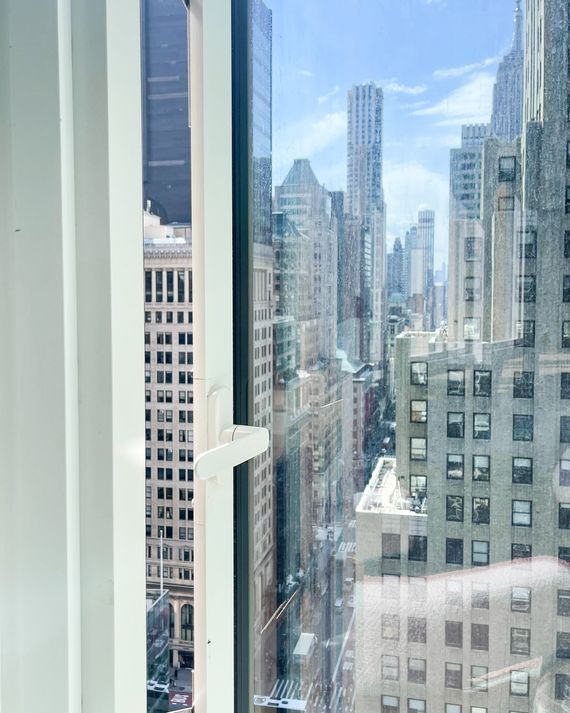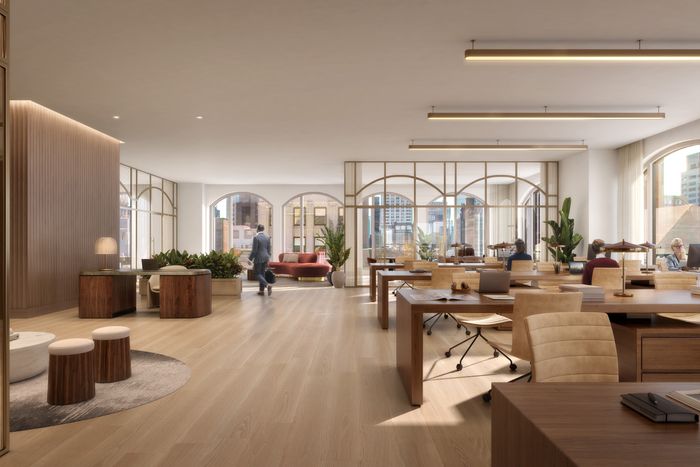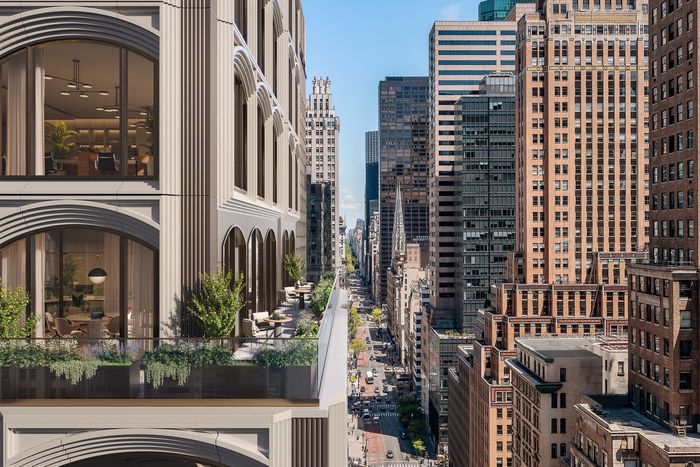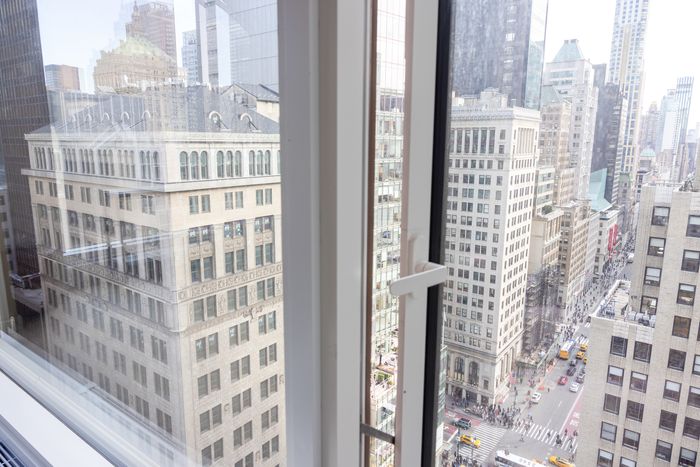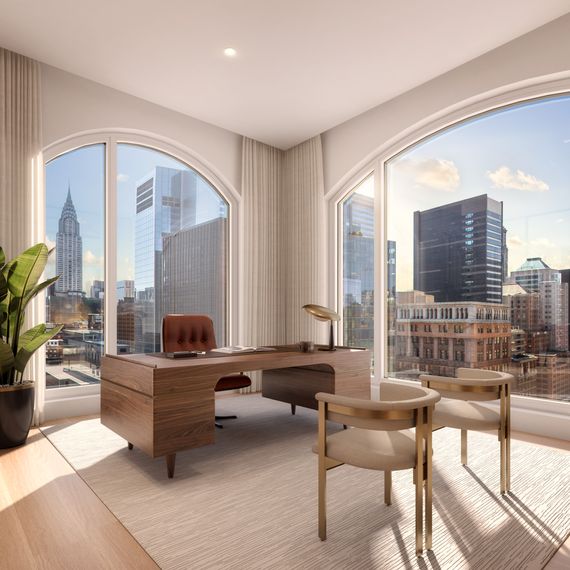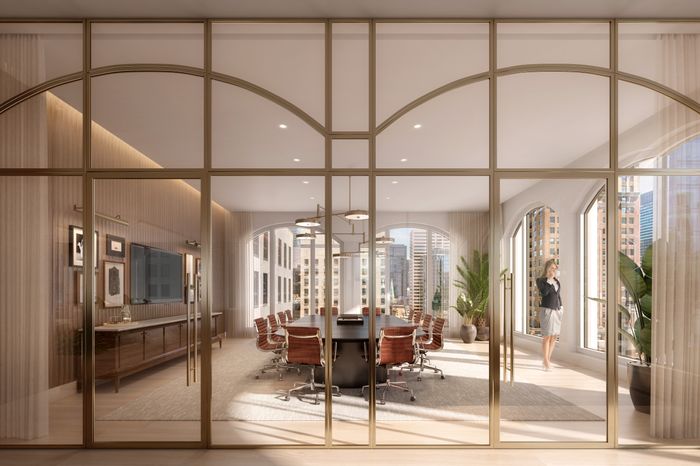An Open Office Window at 520 Fifth Avenue Is a Rarity

In a glassy corner office at 520 Fifth with views of Grand Central and the Empire State Building, I watched as the developer Ian Michael Klein performed a magic trick: Reaching a hand toward the frame of a south-facing window, he turned a handle, pushed lightly, and popped it open. A four-inch gap — the limit set by city safety regulations — let in a burst of cool March air and the sounds of Fifth Avenue 18 stories below. Before me was an operable, openable window — what might be the first of its kind in a new office in midtown since 1961.
Klein’s employer, the Manhattan firm Rabina, bought the site in 2019 and started work in 2020, sharing schematics on Zoom. That fall, the team met in their offices in a midtown high-rise — a glass box that like most other glass boxes in the area was hermetically sealed. As they breathed through masks, they argued over what future workers might want from an office in the COVID era: not just fresh air, which gets supplied through any old HVAC system, but a feeling of control. “It’s a quiet luxury thing,” said Klein, Rabina’s head of development. “We’re doing things that allow people to feel comfortable and have ownership.”
All offices offer some version of temperature control. Buildings that went up before the invention of the air conditioner were designed on thinner lots so workers could open windows and get a cross-breeze. Tenants used electric fans and, later, early window air-conditioning units to keep things cool. But in 1961, the city passed a massive zoning ordinance that took into account the growing popularity of central air-conditioning in commercial spaces and allowed for new construction to go wider and deeper as windows played a smaller role in regulating temperature. The ordinance didn’t outlaw operable windows in offices, but the practice seemed to fall out of favor with developers. Andrew Rudansky, the press secretary at the Department of Buildings, wanted to help me figure out why, so he asked around. “The consensus,” he wrote, is “practical reasons.” Namely, opening a window made buildings with central HVAC systems inefficient.
A rendering shows details pulled from residential design: wood floors, smooth ceilings, warm textures.
Photo: DBOX
But efficiency can’t please everyone. There were office fights about temperature. (At Vice, my co-workers and I bought a digital thermometer to prove to our bosses that a single row of desks suffered 60-degree temperatures in deep summer.) At 520 Fifth, opening a window might help keep the peace — as do thermostats positioned around the space. A receptionist could keep a waiting area cool for guests in blazers or the conference room could be warmed up after the sun passes overhead. “You have a completely controlled environment,” said Klein.
Adelaide Polsinelli, who sells commercial space for Compass, told me that after COVID, she started getting regular questions about air circulation and indoor air quality. For those clients, the window “could be an attractive differentiator,” she said. (As to whether smokers appreciate it more — or the terraces and loggias on some office floors — Klein said the building doesn’t allow smoking.)
The offices were designed in 2020 with more opportunities for a blast of fresh air from terraces or loggias.
Photo: Binyan Studios
The cost of adding this amenity was “negligent,” Klein explained. That’s because the building’s 25 floors of office space are sandwiched between a private club below and luxury condos above. The city requires those condos to have real working windows, so copy-pasting those windows on the office floors didn’t require a ton of work. (The residential windows start higher off the floor and are set wider apart to allow for a feeling of “enclosure and privacy,” Klein says, whereas office tenants want to “maximize light and air.”) Architects at Kohn Pedersen Fox and interior designer Vicky Charles, best known for the oomph of Soho House, also pulled other details from residential designs to make the space feel less like a “corporate office environment,” Klein said, and more like the homes where workers were already spending many of their workdays, pointing to a communal kitchen with woodsy cabinetry, hardwood floors, and ceilings without a single drop tile. But the least corporate touch had to be those windows — a little burst of freedom, as Klein put it: “Sometimes, you also want to realize that you’re not trapped in a glass box.”
Breathe your city.
Photo: Alexander Stein
A rendering for a corner office that would give its occupant a sense of control over the air with a thermostat and windows on two sides that open.
Photo: DBOX
Imagine sitting around this table with 16 co-workers as the sun streams in, the temperature of the room spiking, then offering to get up and open some windows for a blast of fresh air.
Photo: DBOX
Source link



